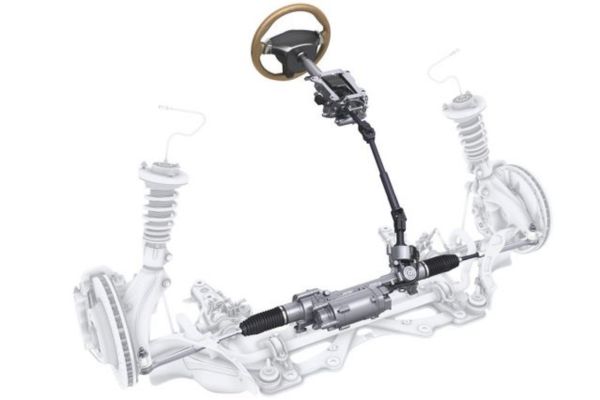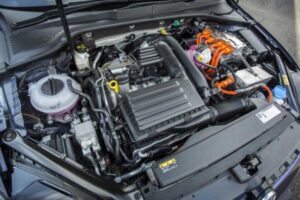Introduction
The automotive industry has been continuously evolving, and one of the significant areas of innovation is electric steering technology. Electric steering, also known as electric power steering (EPS) or electrically assisted steering, has revolutionized the way vehicles are controlled and maneuvered. In this article, we will explore the various aspects of electric steering and its impact on the automotive landscape.
The Impact of Electric Steering on Comfort and Vehicle Safety
Electric steering has played a pivotal role in enhancing both driving comfort and vehicle safety. With its electronically controlled system, electric steering offers smoother and more precise steering inputs, resulting in reduced driver fatigue during long journeys. The elimination of mechanical linkages in traditional steering systems also reduces vibrations and harsh feedback, leading to a smoother driving experience.
Furthermore, electric steering systems are equipped with advanced safety features, such as lane-keeping assist and active park assist. These features leverage the electric steering’s responsiveness to assist drivers in maintaining their lanes and executing complex parking maneuvers with ease, thus contributing to overall road safety.
Electric Steering: Energy Efficiency and Sustainability in the Automotive Industry
Energy efficiency and sustainability have become crucial considerations in the automotive industry. Electric steering plays a significant role in reducing energy consumption compared to traditional hydraulic power steering systems. Unlike hydraulic systems that constantly draw power from the engine, electric steering only consumes energy when steering assistance is required. This leads to improved fuel efficiency and reduced carbon emissions, aligning with the global push for greener technologies.
The implementation of electric steering also aligns with the growing popularity of electric and hybrid vehicles. As automakers focus on reducing the carbon footprint of their fleets, electric steering proves to be a viable and sustainable choice for steering technology.
Exploring the Advantages of Electric Steering for Enhanced Driving Experience
Electric steering technology brings forth a multitude of advantages that contribute to an enhanced driving experience. One such advantage is variable steering assistance. Electric steering systems can be programmed to provide different levels of assistance based on vehicle speed, driving conditions, and driver preferences. This adaptability ensures optimal control and handling, whether navigating through tight city streets or cruising on the highway.
Additionally, electric steering enables innovative features like active damping, which automatically adjusts steering resistance to counter external forces such as crosswinds or road irregularities. This results in improved stability and responsiveness, further elevating the driving experience.
Electric Steering: Innovations and Future Trends
As technology continues to advance, electric steering is poised to witness further innovations and exciting trends. One such trend is steer-by-wire technology, which replaces the physical steering column with electronic controls. Steer-by-wire offers unprecedented design flexibility, enabling vehicle designers to reimagine cabin layouts and create new concepts for future mobility.
Furthermore, the integration of artificial intelligence and machine learning algorithms in electric steering systems opens the door to advanced driver assistance systems (ADAS). These systems can learn from driving patterns, predict potential hazards, and provide real-time assistance, inching closer to fully autonomous driving.
The Role of Electric Steering in Autonomous Driving
Electric steering is a critical component in the development of autonomous driving technology. The precise and responsive nature of electric steering systems enables seamless integration with autonomous driving platforms. Electric steering’s ability to work in synergy with sensors, cameras, and other autonomous systems facilitates safe and reliable vehicle control without human intervention.
The transition to autonomous driving will likely see increased demand for redundant electric steering systems to ensure fail-safe operation. This redundancy ensures that the vehicle can maintain control even in the event of a system failure, thereby bolstering public trust in autonomous vehicles.
Electric Steering vs. Hydraulic Steering: A Comparative Analysis
To better appreciate the benefits of electric steering, it is essential to compare it with the traditional hydraulic power steering. Hydraulic steering systems rely on a hydraulic pump, which continuously draws power from the engine and contributes to parasitic losses and decreased fuel efficiency.
On the other hand, electric steering operates on-demand, significantly reducing energy consumption and optimizing power usage. Additionally, electric steering offers more precise and customizable steering feel compared to hydraulic systems, which can feel vague and less responsive.
Challenges and Solutions in Implementing Electric Steering in Commercial Vehicles
While electric steering has gained widespread acceptance in passenger vehicles, its implementation in commercial vehicles presents unique challenges. Commercial vehicles, especially heavy-duty trucks, require robust steering systems capable of handling heavier loads and harsher operating conditions.
One of the primary challenges is the need for powerful electric steering systems that can provide sufficient assistance to heavy commercial vehicles. Advanced electric steering systems with higher torque capacities and enhanced durability are crucial for ensuring the safety and drivability of these vehicles.
Electric Steering’s Influence on Vehicle Design and Electrification
The shift towards electric steering aligns with the broader trend of vehicle electrification. Electric and hybrid vehicles benefit from electric steering’s energy efficiency, making it an integral part of the vehicle’s overall eco-friendly design.
Moreover, electric steering’s compact and lightweight nature allows for greater design flexibility. Designers can optimize vehicle layouts, create more spacious interiors, and even explore novel concepts such as 360-degree steering wheels, all made possible by the elimination of bulky mechanical components.
The Economic Benefits of Electric Steering: Fuel Savings and Reduced Maintenance Costs
From an economic perspective, electric steering offers substantial benefits to vehicle owners. The increased fuel efficiency in vehicles equipped with electric steering translates into noticeable savings at the pump over the vehicle’s lifetime.
Furthermore, electric steering systems have fewer moving parts and are less prone to wear and tear, leading to reduced maintenance costs. Vehicle owners can enjoy more extended periods between service intervals, enhancing the overall ownership experience.
Conclusion
Electric steering has undoubtedly transformed the automotive industry, ushering in a new era of energy-efficient, safer, and more comfortable vehicles. With ongoing advancements and the promise of autonomous driving, electric steering’s influence is set to grow further in the automotive landscape.
As consumers and automakers alike continue to prioritize sustainability and technological innovation, electric steering will remain a cornerstone in the pursuit of a greener and safer automotive future.



